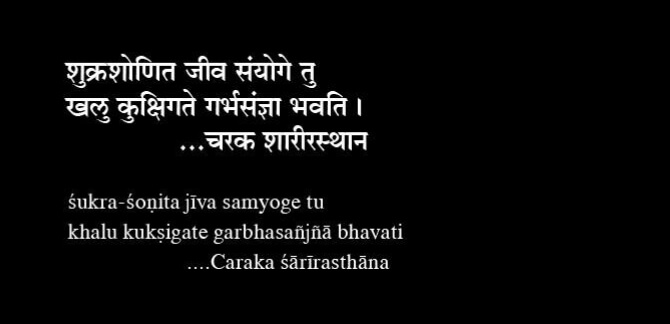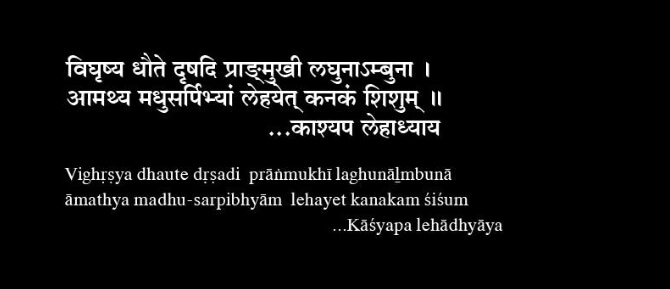MENTAL PREPARATION
Ayurveda advocates that both man and woman should be willing to have a child and carry out the recommended preparations before conception. Unplanned or accidental pregnancies are strongly opposed in Ayurved. Therefore, only when the man and woman are physically and mentally prepared, should they plan a baby.

In this verse, the word ‘kukshi’ refers to the uterus. Shukra is the male reproductive cell or sperm. Shonit is the female reproductive cell or ova. The third element required for conception is jiva (or ‘the spark of life’). It is only when all three come together that the embryo will be formed. The egg and sperm are capable of shaping a new life and they carry the qualities of the man and the woman. The physical, mental, and spiritual state of both the parents is represented in their eggs and sperm. These properties decide the foundational development (which Ayurved calls prakriti) of the embryo. In common language, we often refer to a person as having a ‘strong constitution’ or a ‘weak constitution’. This constitution is decided at the moment of conception. The healthier and purer the sperm, ovum, and life force, the stronger the constitution of the baby resulting from their coming together.
On the other hand, if either the man or the woman is weak or suffering from any disorder or imbalance during conception, then that will affect their reproductive cell, and affect its potency, also affecting the constitution of the child.
PURE AND HEALTHY REPRODUCTIVE CELLS
A woman’s ovaries produce ova, which, if unfertilized, are expelled through menstrual discharge. In men, sperm is contained in semen. It is important to understand and see what state menstrual discharge and semen should be in, for ideal conception. Their indicators are given below. Their ideal qualities and possible defects are described in Ayurvedic texts in detail. Menstrual blood, for example, should ideally be as described in Madhavnidan:

Ideally, a woman’s period should:
- Take place every 28 days.
- Last for 4-5 days.
- Discharge blood that is not sticky in nature and is free of clots.
- Not be accompanied by a burning sensation, pain, or discomfort.
- Neither be excessive nor too scanty.
- Cleanse the uterus.
- The blood discharged should be bright red in colour. The stains it leaves on cotton cloth should be easily washable under running water.
This kind of clean blood during menstruation indicates ideal health for conception. Even a minor deviation from the descriptions above is considered unhealthy and needs to be treated. In many women, menstrual bleeding lasts only one to two days, is blackish or pale red, is accompanied by mucus, or contains clots. Women mostly think that this is normal and carry on with their regular lives.
In addition, sticky menstrual blood, or a white or red discharge (e.g. leucorrhoea, menorrhagia) outside of the time of menstruation, causes the loss of nutrients that would otherwise strengthen the bones, bone marrow, and shukra dhatu. These symptoms also need to be watched for carefully, and treated accordingly.

